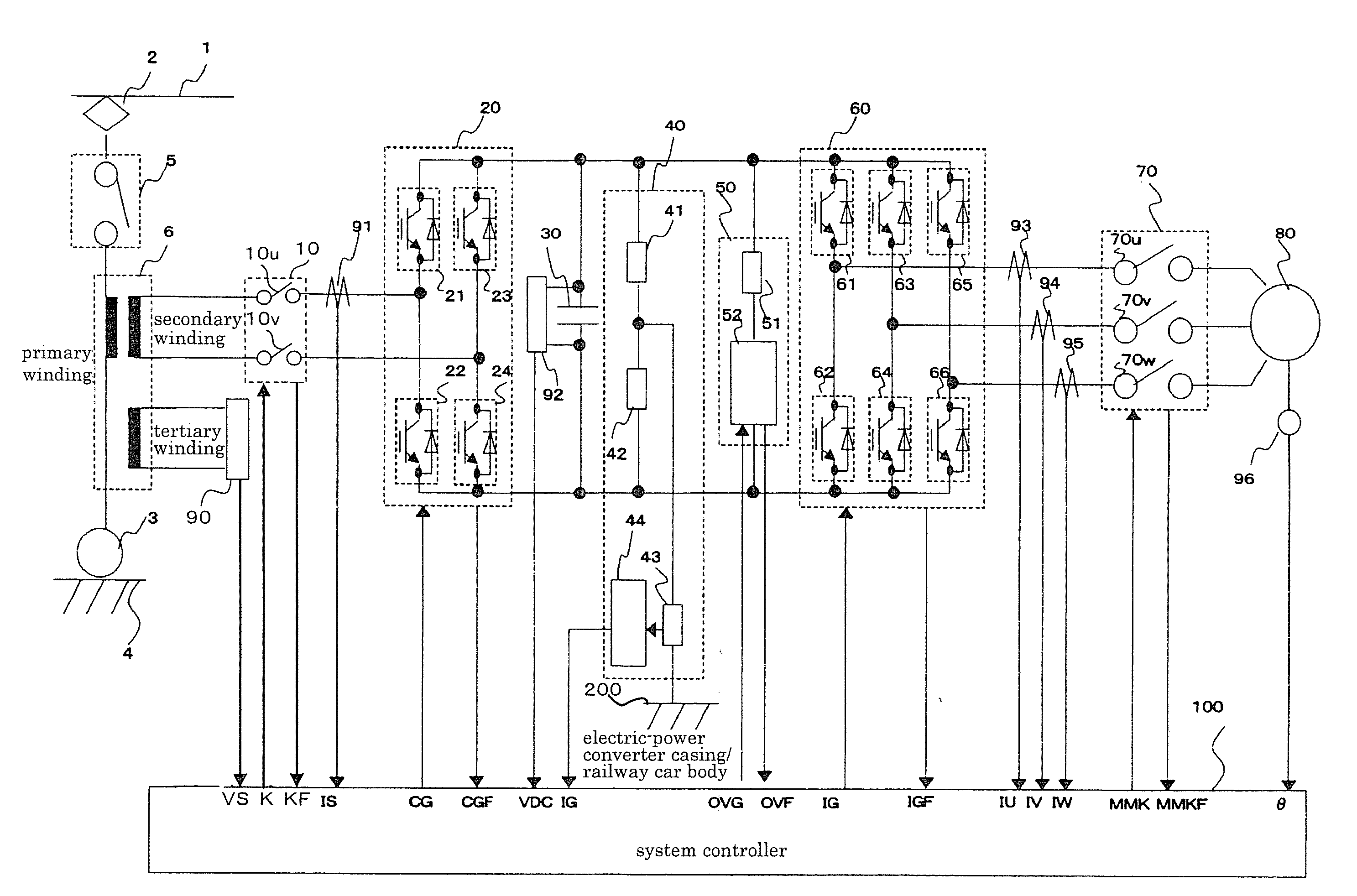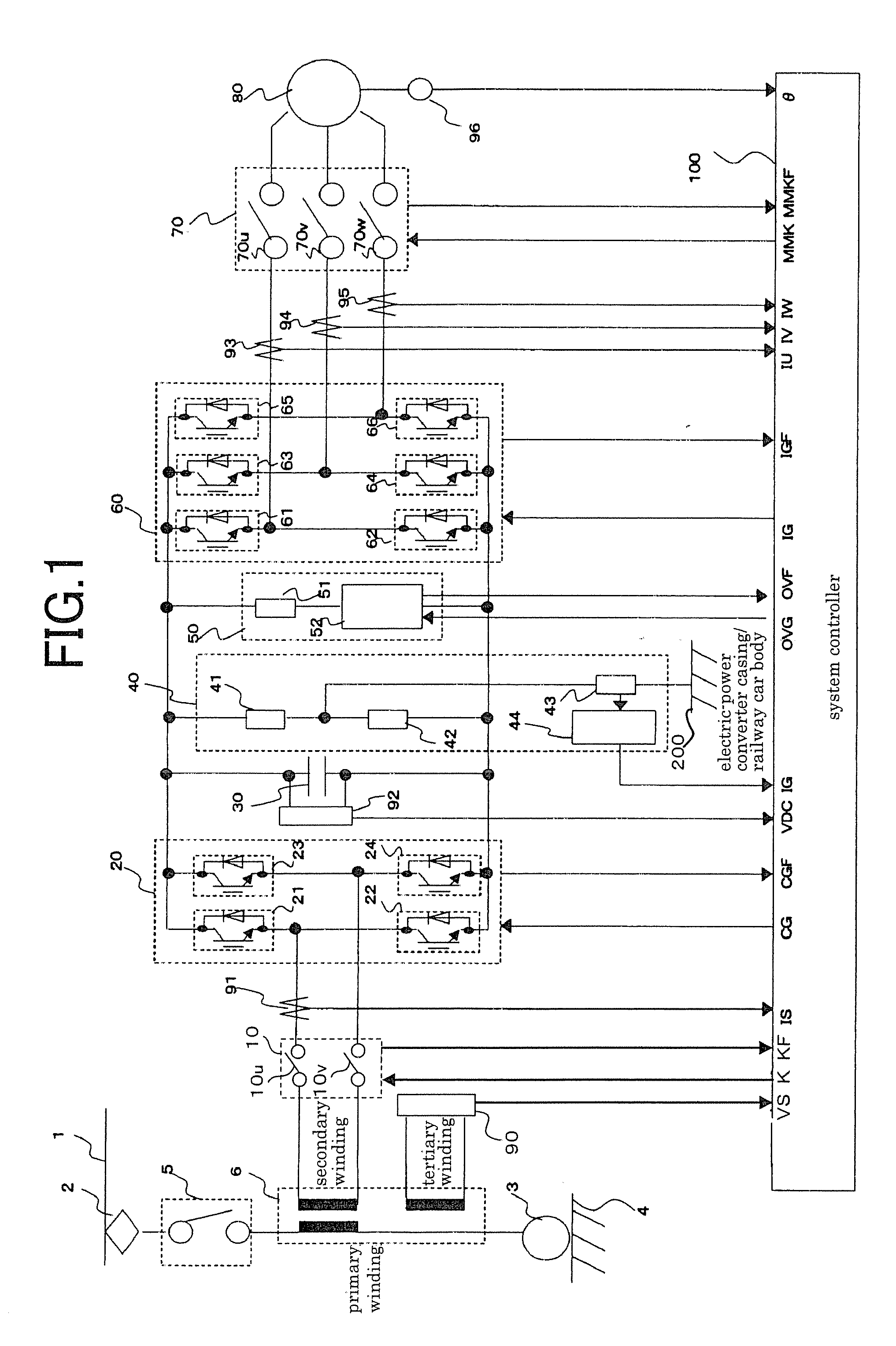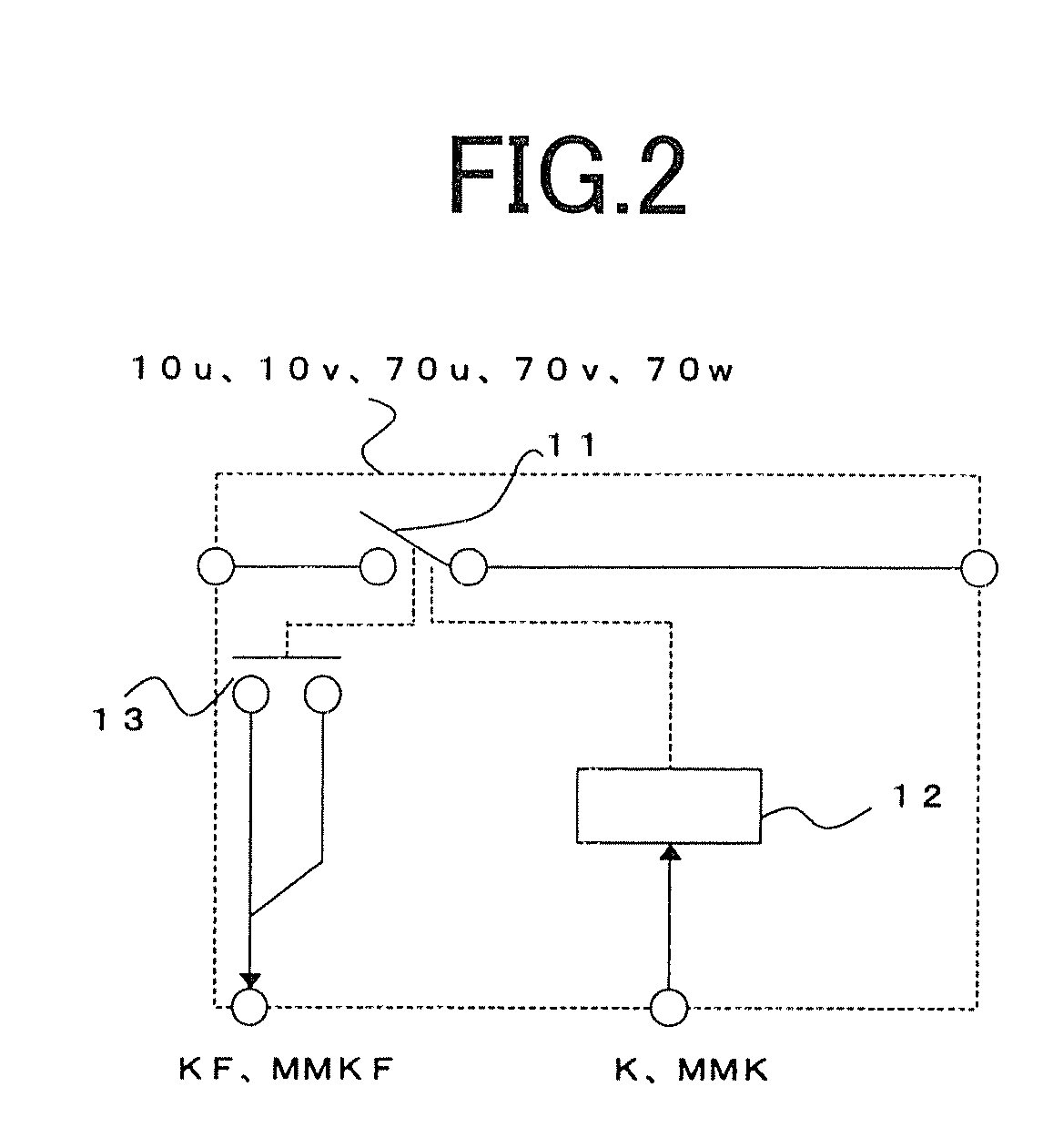Electric power converter
a technology of electric power converters and converters, which is applied in the direction of motor/generator/converter stoppers, dynamo-electric converter control, instruments, etc., can solve the problems of temporary over-current or failure or malfunction of a constituent element, and over-current and over-voltage in the circuit, etc., to achieve reliable protective operation and reliable protection operation
- Summary
- Abstract
- Description
- Claims
- Application Information
AI Technical Summary
Benefits of technology
Problems solved by technology
Method used
Image
Examples
embodiment 1
[0052]FIG. 1 is a diagram illustrating a configuration example of an electric power converter applied to a controller of an electric railway car, according to Embodiment 1 of the present invention. As shown in FIG. 1, electric power is supplied into the main circuit of the power converter from an overhead wire 1 (its AC voltage is generally 20 kV-25 kV) through a current collector 2, and fed to the primary side of a transformer 6 through a breaker 5. The other end of the transformer 6 is connected to rails 4 at the ground potential through wheels 3. It is noted that the breaker 5 has a capability of interrupting a fault current generated when a short circuit occurs; on the other hand, a supply-side contactor 10 and a motor-side contactor 70, which will be explained later, have no capability of interrupting such a fault current.
[0053]The transformer 6 steps down the voltage input into its primary winding, to output from its secondary and tertiary windings the respective stepped down ...
PUM
 Login to View More
Login to View More Abstract
Description
Claims
Application Information
 Login to View More
Login to View More - R&D
- Intellectual Property
- Life Sciences
- Materials
- Tech Scout
- Unparalleled Data Quality
- Higher Quality Content
- 60% Fewer Hallucinations
Browse by: Latest US Patents, China's latest patents, Technical Efficacy Thesaurus, Application Domain, Technology Topic, Popular Technical Reports.
© 2025 PatSnap. All rights reserved.Legal|Privacy policy|Modern Slavery Act Transparency Statement|Sitemap|About US| Contact US: help@patsnap.com



